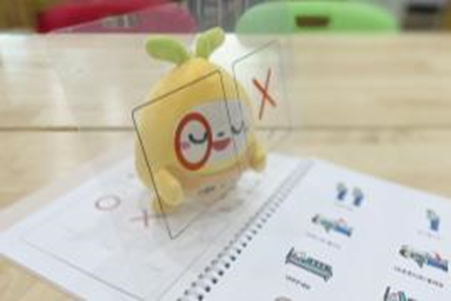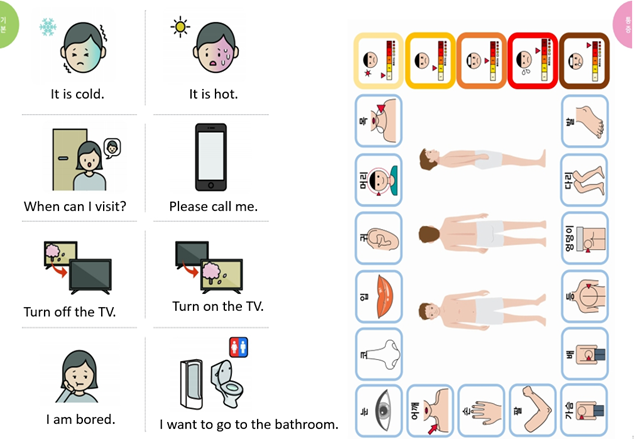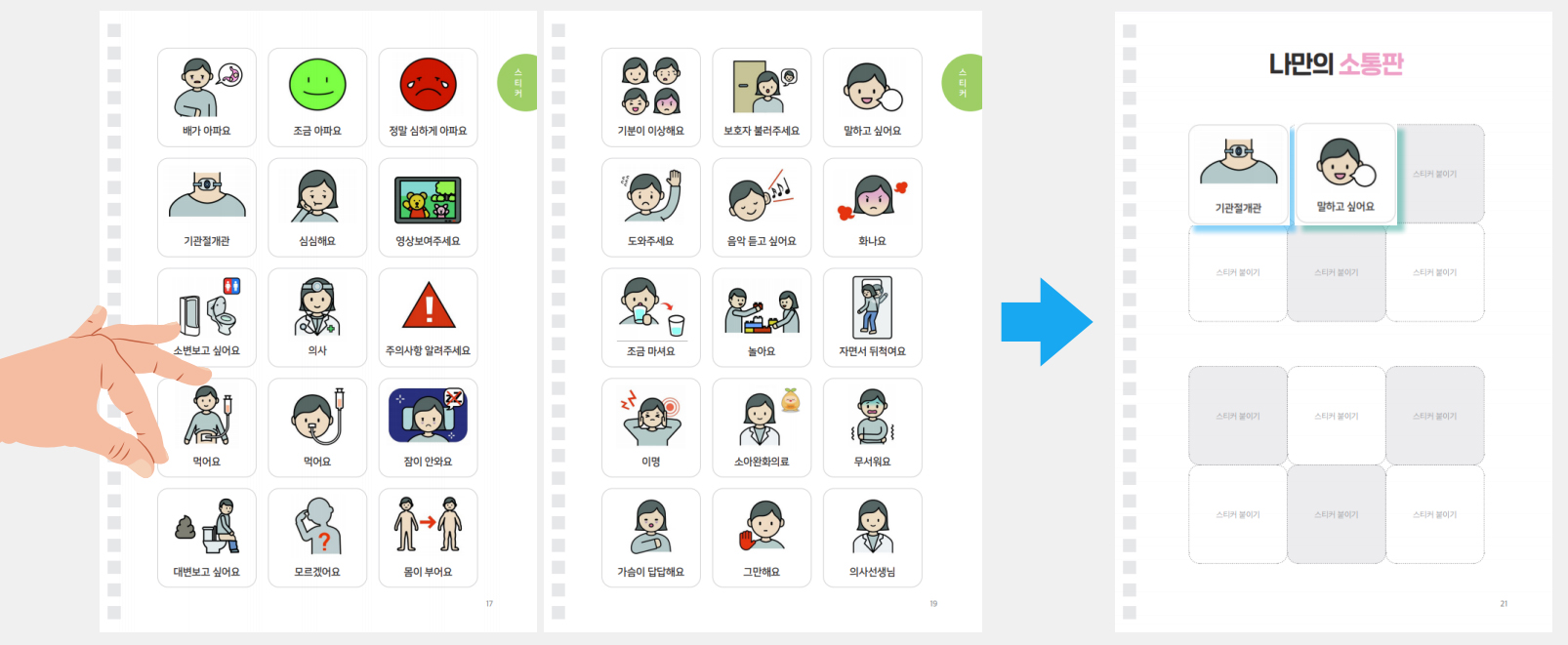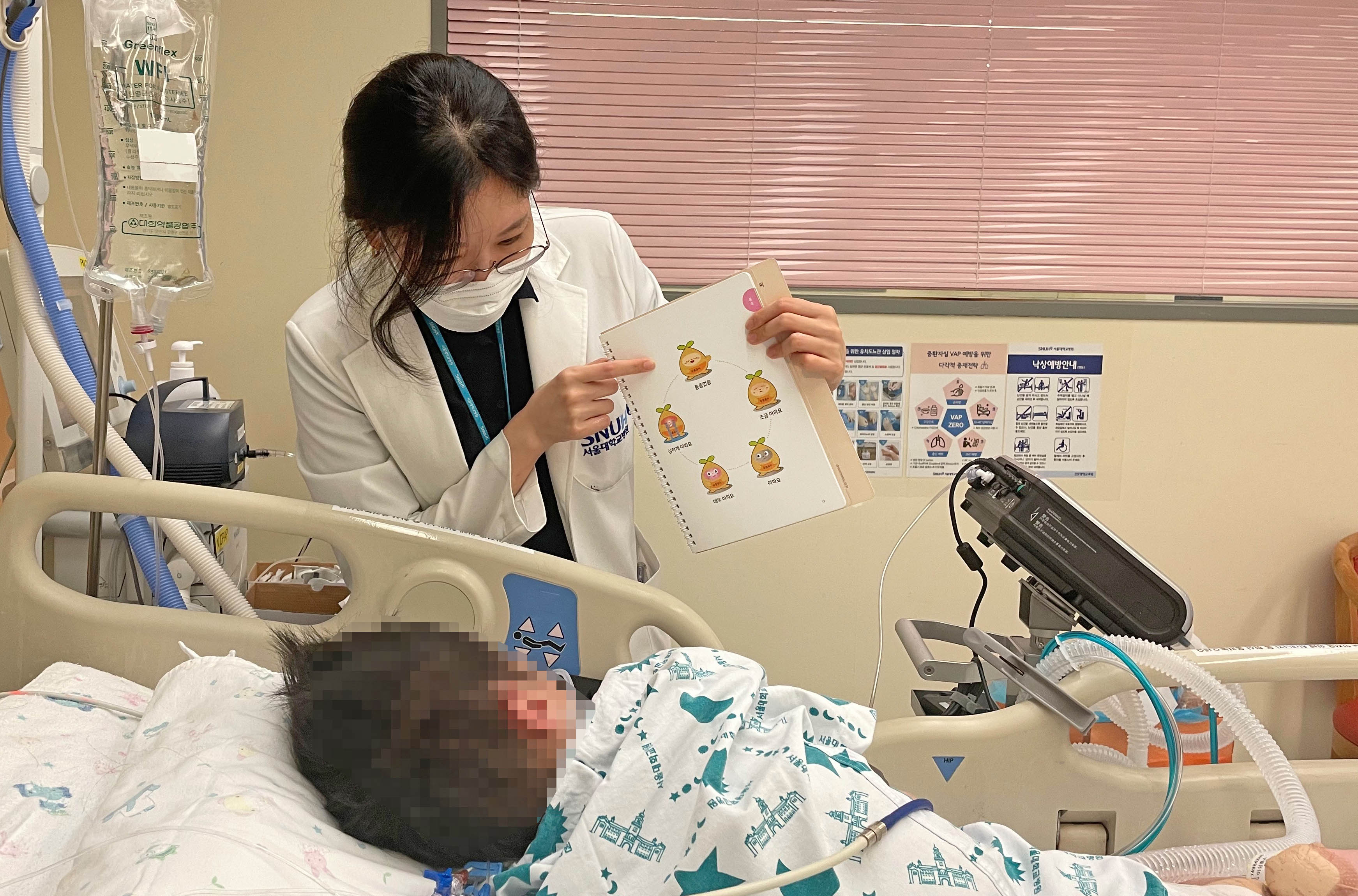Seoul National University Children’s Hospital publishes ‘A simple and easy communication book’
- SNUH DREAMSEEDS made a complementary and alternative communication guide for children who experience difficulty communicating
- Uses facial expressions and hand gestures... Easily and simply increases opportunities for communication between patients, guardians, and medical staff
When you can't speak, use your hand gestures, and when you can't even move your hands, use your eyes. A “friendly book” has been published that guides child and adolescent patients who have difficulty communicating with their guardians and medical staff on how to communicate effectively.
By using the easy and simple communication methods presented in this book, patients with disabilities both major and minor in understanding speech and language will be able to gain more communication opportunities in daily life or medical settings.
On October 7, Seoul National University Children's Hospital announced that 'A simple and easy communication book' produced by DREAMSEEDS at Seoul National University Children's Hospital Integrated Care Center, recently won the Excellence Prize in the Complementary and Alternative Communication Contest. It is expected to be used in various medical fields including the health management business.
In children's hospitals, there are patients who have difficulty communicating as a result of a variety of situations, such as when they have a ventilator, have issues with their mouth, or have a tracheotomy tube inserted. Even everyday expressions such as “It’s cold in the ward” or “I want to go to the toilet” can be a big challenge for such patients. Therefore, as might be expected, the discomforts and stresses experienced during the treatment process are great.
Last July, ‘A simple and easy communication book’ was completed to improve quality of life for patients and guardians who have been negatively affected due to difficulties in communication. This book was written by supplementing the shortcomings of the complementary and alternative communication tools that have been used previously, and by consulting intensive care unit medical staff.
Augmentative/alternative communication (AAC) refers to providing opportunities for communication and improving communication skills by providing supplementary or alternative communication methods for people with language communication disabilities.
The ‘simple and easy communication book’ consists of four sections: △Basic communication △Communication in medical environment △Sondam (gesture) symbols △Creating your own communication chart.
‘Basic Communication’ consists of a keyboard that allows you to complete vocabulary directly by pointing to the desired letter or vowel, and an O/X board that allows expression of ‘yes or no’ answers. The O·X version is specially made with transparent film so that the patient's intention can also be confirmed by looking at the direction of the pupil.

[Photo] O.X version made of transparent film
In ‘Communication in Medical Environment’, 16 expressions, 15 body parts, and 5 levels of pain intensity that patients mainly request are depicted as pictorial symbols. Patients with speech or mobility difficulties can easily request requests such as “Turn off the TV,” “I want to go to the bathroom,” and “Please remove phlegm” by directing the picture with their fingers, and they can also express the location and severity of the pain.

[Figure] 16 main expressions (left) and description of pain area and intensity (right)
In addition, pictures detailing the central venous catheter, indwelling catheterization (urine cord), and tube feeding were also included. Medical staff can easily explain the medical situation to the patient and family by looking at this picture.
In the following ‘Sondam Symbol’ section, an system of Sondam, a communication method using hands, facial expressions, and gestures, was introduced. If you learn Sondam symbols, it is possible to communicate even when it is difficult to speak or use tools.

[Figure] Create your own communication chart: Patients can create their own communication board by attaching picture stickers suitable for their situation or writing them out directly.
Lastly, in ‘Create Your Own Communication Chart’, 12 communication boards that can be configured for whatever purpose are provided. Patients can create their own communication board by attaching picture stickers suitable for their situation or writing on it directly. It is expected that by using a DIY communication board where their most needed expressions are gathered, we will be able to take a step closer to more customized treatment for patients.

[Photo] Using a simple and easy communication book
Integrated Care Center Professor Kim Min-Sun (Department of Pediatrics) said, “This book will be meaningful not only for pediatric patients but also for adult patients who have difficulty speaking due to ventilators.” “Furthermore, it is expected that a simple and easy communication book can be used in many areas, such as applying additional pictorial symbols for special needs school children to the special needs school itinerant health care project,' she said.
'Dreamseeds' from the Seoul National University Children's Hospital Integrated Care Center is a team in charge of pediatric palliative care and home medical care for patients with severe and rare intractable diseases. Anyone who wishes to can download the ‘Very Easy Communication Book’ on the official website of Dreamseeds (www.dreamseeds.co.kr).